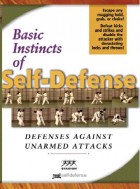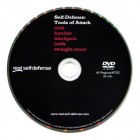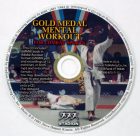Is the instructor competent, training area and its surface safe, showers clean, little children and grown-ups do not mix in one group?
This tip will deal with selecting a gym or a martial arts school.
The first concern is what precautions are made against injuries, whether sudden or gradual-onset. Ask the instructor if he or she has completed a first aid course (including CPR), does he or she know where the nearest hospital with emergency room is, does he or she have an agreement with a physician or a nurse who will be available to help should an emergency occur during a workout or a class, is there a first-aid kit on the premises, and are ice bags always ready?
Look at the class and see what kind of floor people exercise on. If it is bare concrete, or concrete covered by carpet, wood, or a thin mat, forget this place and go elsewhere.
The only acceptable training surface for combat sports and martial arts is a springing floor which in the case of various types of wrestling (such as Greco-Roman, free-style, judo, sambo, and others) is additionally covered by the mat.
To find out if the mat lies on a springing floor, either ask the instructor or look at what happens when someone lands on it. If the shock wave travels all over the mat, then it lies on a springing floor. A springing floor has a bounce similar to a gymnastic floor for floor exercises.
The reason self-defense or contact sports workouts should be conducted on springing floors is that such floors absorb a considerable part of an impact’s energy thus protecting joints. The energy of all the hops, jumps, and throws that is not absorbed by the floor is absorbed by the joints and causes gradual-onset injuries, such as knee and back pains, shin splints, and even broken foot bones. An accidental fall in which you hit your head on a hard floor is very likely to end in tragedy, and wearing a foam helmet like those used in taekwondo may not be enough protection to prevent it.
Laying a soft mat, such as a regulation wrestling mat, on an unyielding floor protects against superficial bruises but offers little protection for the joints.
Next ask about showers and what shape they are in. Inspect them. Are they clean, without any fungi, molds, or puddles of standing water? Are the floors in the lockers and on the way to the showers clean and dry? If not, then getting athlete’s foot is likely there.
No showers mean low standards of personal hygiene of the instructor and of the people who exercise in this gym. Apart from basic personal hygiene, an after-workout shower is one of the means of speeding up recovery and should be done as soon as workout is over.
In addition to these material factors, the way the instructor conducts a workout has a bearing on the likelihood of injuries. The most obvious cause of injuries is mixing little children and grown-ups in one group. This is a serious danger for the children because an accidental bump from a grown-up can send them flying, and if struck accidentally or fallen upon by a grown-up, they can be squashed to death. Besides that, people of very different skill and fitness levels should not exercise in the same group because it is impossible to lead them through the same exercises and to have them respond similarly to these exercises. As a result of a warm-up all members of the whole group should be equally ready for the main part of the workout and during the main part their levels of arousal, their concentration, and degrees of their fatigue should be similar. If some persons are at peak of their activity but some others are too fatigued to have full control of themselves and their surroundings, and still others are too bored to pay attention, accidents can happen.
In the next two tips, Self-Defense Tip #22 — Selecting a Gym or a Martial Arts School, Part II and Self-Defense Tip #23 — Individualization of Self-Defense Instruction, you will learn how a good instructor composes and conducts a workout.
Self-defense tip from Thomas Kurz, co-author of Basic Instincts of Self-Defense and author of Science of Sports Training, Stretching Scientifically, and Flexibility Express.
Self-Defense Moves
For your defense moves to work under stress they must be based on your natural, instinctive reactions, require little strength and limited range of motion, and be proven in fighting experience.To learn how your natural reactions can instantly defeat any unarmed attack, see the video Basic Instincts of Self-Defense.
Defend Against Weapons
To defend against weapons you have to know how they are used. Also — every stick has two ends … the weapon of attack may become a weapon of defense in your hand …To learn how the typical street weapons (club, knife, razor) are used by an experienced streetfighter and how to practice with them, see the video Self-Defense: Tools of Attack — Club, Hatchet, Blackjack, Knife, Straight Razor.
Mental Toughness
Staying cool under pressure is more important for self-defense than being physically fit and technically skilled. If you can’t control your mind what can you control?To learn mental techniques that let you calmly face any threat and act rationally in the heat of a fight, click here.
For a complete list of our products, click here.







